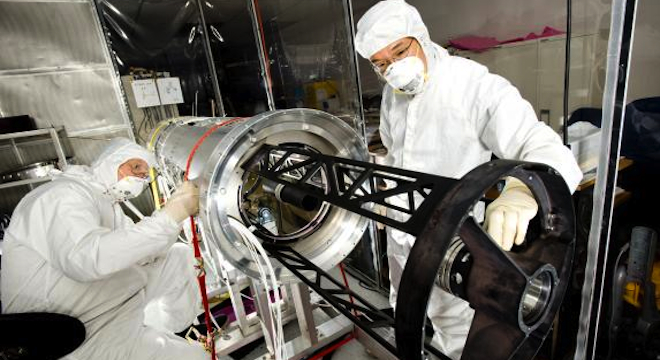Delayed but important fireworks occurred on Thursday when NASA launched and retrieved a sounding rocket carrying a $3 million instrument designed to snap a quick image of the Sun’s magnetic fields and to obtain data to build a more permanent spacecraft.
The rocket, which was carrying a 12-foot-long instrument called the Solar Ultraviolet Magnetograph Investigation, or SUMI, successfully blasted off from a missile test site in New Mexico on Thursday afternoon and climbed about 170 miles above the Earth before parachuting back down about eight minutes later.
That brief flight was exactly what the mission called for, though, and it was an especially good result considering that NASA attempted to launch SUMI up into orbit back in 2010 and failed twice.
“Some screws that hold one of the telescope mirrors in place broke off because of the massive acceleration of the rockets (0-4500mph in 44 seconds),” wrote the principal investigator on the mission, solar scientist Jonathan Cirtain, in an email to TPM, referring to the earlier failed efforts. “We fixed this design error. Also, a component of the experiment had a software failure that has been corrected and tested.”
Though short-lived, SUMI’s flight is important for NASA because the instrument contained an ultraviolet light sensor, allowing scientists to catch a glimpse of the Sun’s chromosphere — an area of the sun’s lower atmosphere that is difficult for other instruments to peer into. Moreover, many other instruments can only detect visible or infrared light, giving them a more limited view of the solar activity taking place.

Specifically, SUMI was designed to help scientists see two types of atoms being emitted in the chromosphere and the Sun’s “transition region,” an especially active area criss-crossed by magnetic fields in which solar material is heated up and where the charged particles emitted along with solar flares are thought to originate.
These bursts of charged particles, which can strike the Earth and cause disruptions in telecommunications and the power grid, as well as spectacular Northern Lights, are called “coronal mass ejections,” or CMEs.
“SUMI will make the first measurements of the magnetic field in these locations,” wrote Cirtain, “Since the changes in the geometry of the magnetic field are known to lead to flares and CMEs, the ability to measure the field is the first major step needed to make progress on the ways these energetic events form and progress.”
That way, scientists can better understand and anticipate when solar flares are likely to lead to issues here on Earth. Also, Cirtain said in a NASA statement that the data gathered by this test flight will allow the agency to build more permanent, orbital instruments that will be able to predict space weather.
Correction: This article originally incorrectly said that SUMI rocketed to 170,000 miles above the Earth, when in fact, the altitude reached was far less: 170 miles. The error has since been corrected in copy and we regret it.






